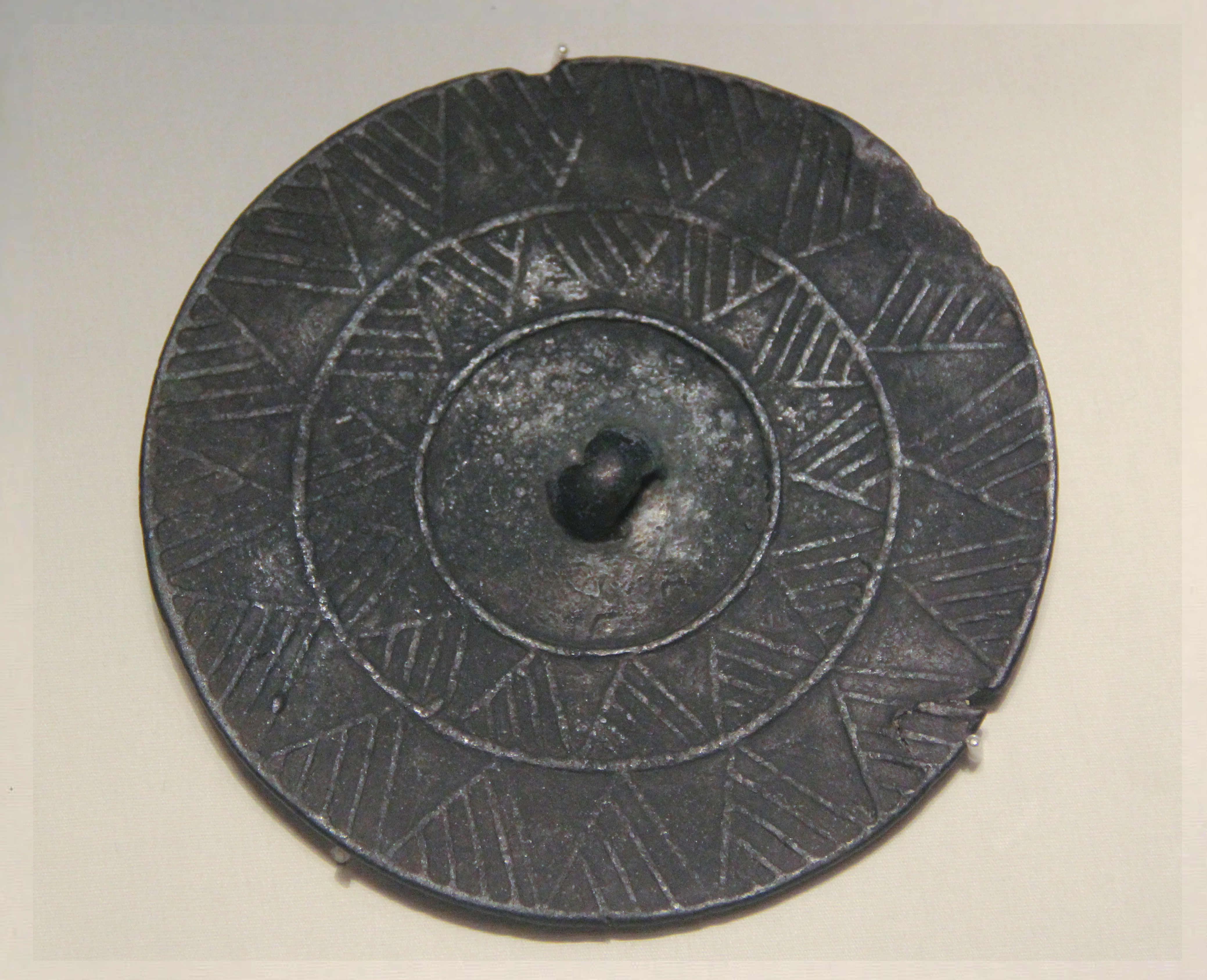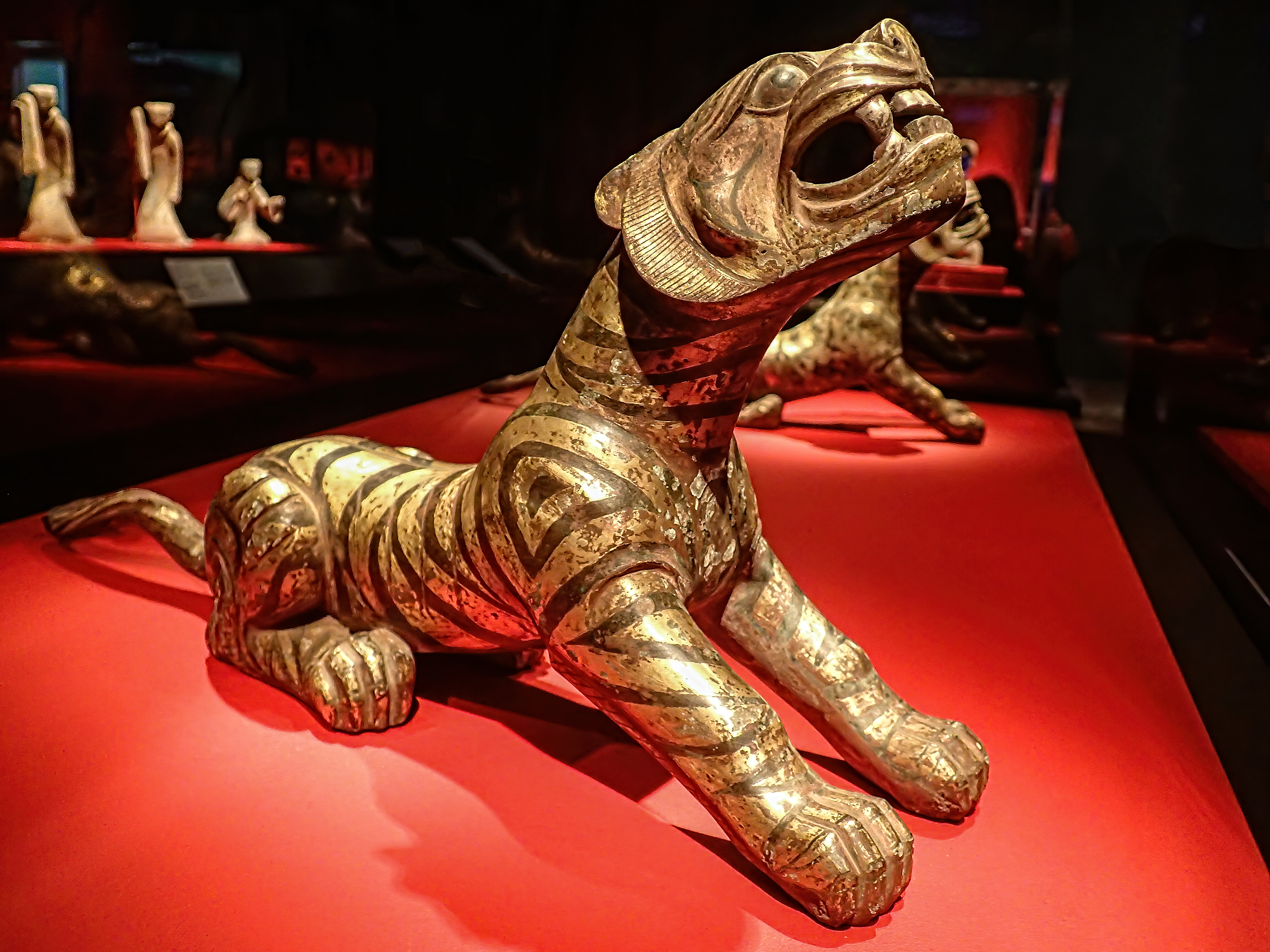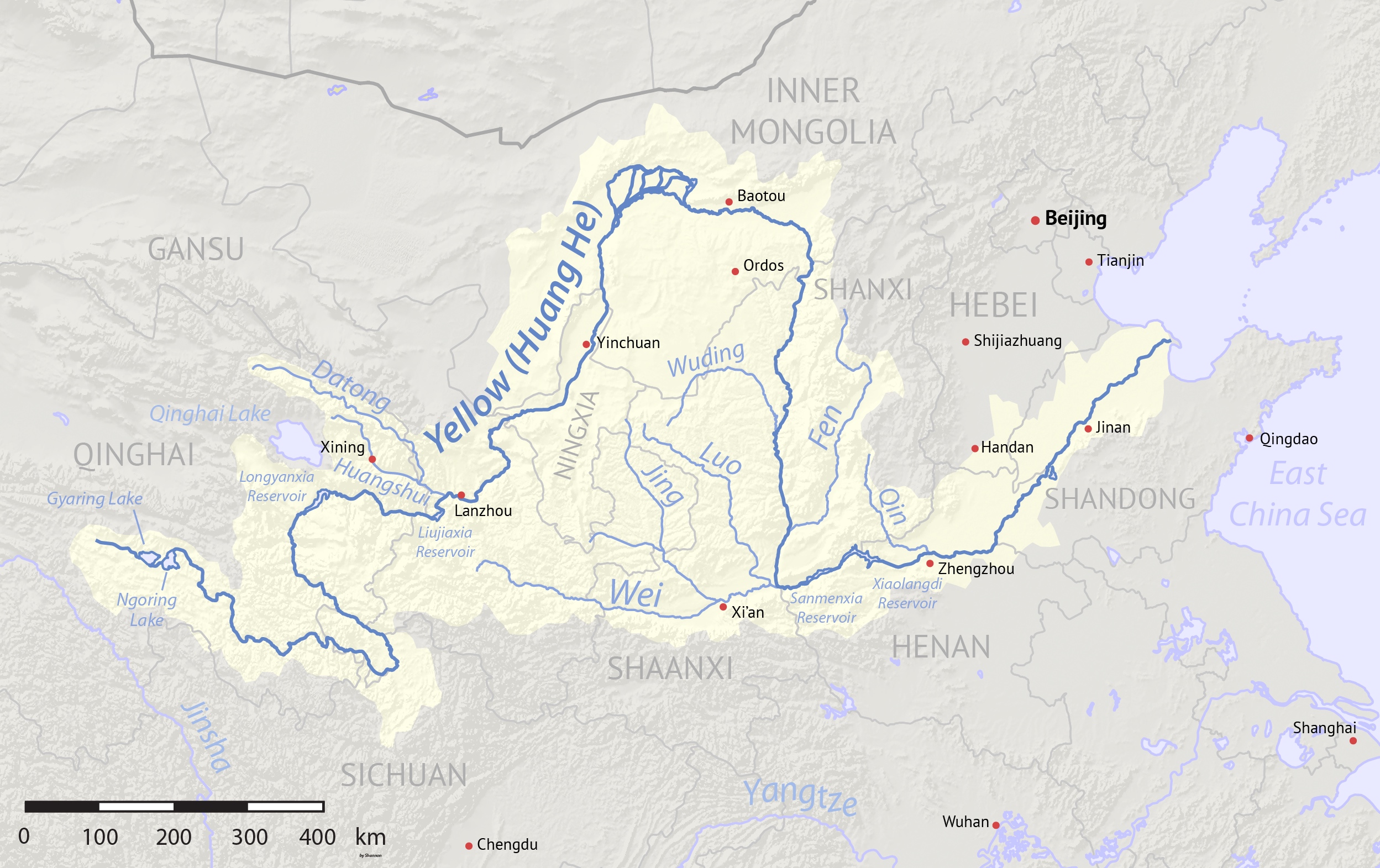|
Majiayao
The Majiayao culture was a group of neolithic communities who lived primarily in the upper Yellow River region in eastern Gansu, eastern Qinghai and northern Sichuan, China. The culture existed from 3300 to 2000 BC. The Majiayao culture represents the first time that the upper Yellow River region was widely occupied by agricultural communities and it is famous for its painted pottery, which is regarded as a peak of pottery manufacturing at that time. History The archaeological site was first found in 1924 near the village of Majiayao in Lintao County, Gansu by Swedish archaeologist Johan Gunnar Andersson, who considered it part of the Yangshao culture. Following the work of Xia Nai, the founder of modern archaeology in the People's Republic of China, it has since been considered a distinct culture, named after the original site, whereas previously it had been referred to as the "Gansu Yangshao" culture. This culture developed from the middle Yangshao (Miaodigou) phase, through an ... [...More Info...] [...Related Items...] OR: [Wikipedia] [Google] [Baidu] |
Qijia Culture
The Qijia culture (2200 BC – 1600 BC) was an early Bronze Age culture distributed around the upper Yellow River region of Gansu (centered in Lanzhou) and eastern Qinghai, China. It is regarded as one of the earliest bronze cultures in China. The Qijia Culture is named after the Qijiaping Site (齐家坪) in Gansu Province. Prior to Qijia culture, in the same area there existed Majiayao culture that was also familiar with metalwork. At the end of the third millennium B.C., Qijia culture succeeded Majiayao culture at sites in three main geographic zones: Eastern Gansu, Middle Gansu, and Western Gansu/Eastern Qinghai. Research Johan Gunnar Andersson discovered the initial site at ''Qijiaping'' () in 1923. Qijia culture was a sedentary culture, based on agriculture, and breeding pigs, which were also used in sacrifices. Qijia culture is distinguished by a presence of numerous domesticated horses, and practice of oracle divination, the metal knives and axes recovered apparently p ... [...More Info...] [...Related Items...] OR: [Wikipedia] [Google] [Baidu] |
History Of Metallurgy In China
Metallurgy in China has a long history, with the earliest metal objects in China dating back to around 3,000 BCE. The majority of early metal items found in China come from the North-Western Region (mainly Gansu and Qinghai, 青海). China was the earliest civilization to use the blast furnace and produce cast iron. Copper Archaeological evidence indicates that the earliest metal objects in China were made in the late fourth millennium BCE. Copper was generally the earliest metal to be used by humanity, and was used in China since at least 3000 BCE. Early metal-using communities have been found at the Qijia and Siba sites in Gansu, with similar sites in Xinjiang in the west and Shandong, Liaoning and Inner Mongolia in the east and north. The Central Plain sites associated with the Erlitou culture also contain early metalworks.Katheryn M. Linduff, Jianjun Mei (2008)''Metallurgy in Ancient Eastern Asia: How is it Studied? Where is the Field Headed?'' (PDF)The British Museum Co ... [...More Info...] [...Related Items...] OR: [Wikipedia] [Google] [Baidu] |
Yangshao Culture
The Yangshao culture (仰韶文化, pinyin: Yǎngsháo wénhuà) was a Neolithic culture that existed extensively along the middle reaches of the Yellow River in China from around 5000 BC to 3000 BC. The culture is named after the Yangshao site, the first excavated site of this culture, which was discovered in 1921 in Yangshao town, Mianchi County, Sanmenxia, western Henan Province by the Swedish geologist Johan Gunnar Andersson (1874–1960). The culture flourished mainly in the provinces of Henan, Shaanxi and Shanxi. Recent research indicates a common origin of the Sino-Tibetan languages with the Cishan, Yangshao and/or the Majiayao cultures. Economy Subsistence The main food of the Yangshao people was millet, with some sites using foxtail millet and others proso millet, though some evidence of rice has been found. The exact nature of Yangshao agriculture, small-scale slash-and-burn cultivation versus intensive agriculture in permanent fields, is currently a matte ... [...More Info...] [...Related Items...] OR: [Wikipedia] [Google] [Baidu] |
Banshan
Banshan was a phase of the Chinese Neolithic Majiayao culture, c. 2600 to 2300 BC. The Banshan site is in Guanghe County, Gansu. In 1923 and 1924, Swedish scholar J. G. Anderson discovered the sites of Banshan, Majiayao, Machang, Qijia and Xindian at Lajia on the north bank of the Yellow River. Chinese Archaeology Gallery File:Head, Banshan phase, Yangshao culture, neolithic China, c. 2600-2300 BC, ceramic - Östasiatiska museet, Stockholm - DSC09652.JPHuman head part of urn from the Banshan phase of the Yangshao culture. Museum of Far Eastern Antiquities (Östasiatiska museet), Stockholm. File:Banshan painted pottery pot 2.jpg, Painted pottery jug from the Banshan phase of the Yangshao culture. The Museum of the Mausoleum of the Nanyue King, Guangzhou, China. File:Burial site reconstruction, Bianjiagou, Gansu province, China, neolithic Yangshao culture, ceramic pots, grind stones, human skeleton - Östasiatiska museet, Stockholm - DSC09659.jpg, Reconstruction of a Banshan ph ... [...More Info...] [...Related Items...] OR: [Wikipedia] [Google] [Baidu] |
Neolithic China
This is a list of Neolithic cultures of China that have been unearthed by archaeologists. They are sorted in chronological order from earliest to latest and are followed by a schematic visualization of these cultures. It would seem that the definition of Neolithic in China is undergoing changes. The discovery in 2012 of pottery about 20,000 years BC indicates that this measure alone can no longer be used to define the period. It will fall to the more difficult task of determining when cereal domestication started. List Schematic outline These cultures are existed for the period from 8500 to 1500 BC. Neolithic cultures remain unmarked and Bronze Age cultures (from 2000 BC) are marked with *. There are many differences in opinion by dating these cultures, so the dates chosen here are tentative: For this schematic outline of its neolithic cultures China has been divided into the following nine parts: #Northeast China: Inner Mongolia, Heilongjiang, Jilin and Liaoning. #Northwes ... [...More Info...] [...Related Items...] OR: [Wikipedia] [Google] [Baidu] |
Dongxiang Autonomous County
Dongxiang Autonomous County (; Santa: Dunxianzu Zizhixien) is an autonomous county in the Linxia Hui Autonomous Prefecture, province of Gansu of the People's Republic of China. It was established as a Dongxiang ethnic autonomous area in 1950. Historically, Dongxiang has long been directly under the jurisdiction of Linxia. During the Republic of China (1912–1949) period, its area was divided between the surrounding counties. Its population in 2020 was 381,700, 88% of whom belonging to the Dongxiang minority group. As of 1993, half of the total Dongxiang minority population lived in the county. At least until the end of the 20th century, Dongxiang County was very impoverished and undeveloped, having a literacy rate of just 15%, the lowest in China. In 2017, it had the highest poverty rate of Gansu, already the poorest province in China. Dongxiang County has a typical Loess Plateau landscape, with numerous gullies and mountains and a dry climate. Administrative divisions Dong ... [...More Info...] [...Related Items...] OR: [Wikipedia] [Google] [Baidu] |
List Of Neolithic Cultures Of China
This is a list of Neolithic cultures of China that have been unearthed by archaeologists. They are sorted in chronological order from earliest to latest and are followed by a schematic visualization of these cultures. It would seem that the definition of Neolithic in China is undergoing changes. The discovery in 2012 of pottery about 20,000 years BC indicates that this measure alone can no longer be used to define the period. It will fall to the more difficult task of determining when cereal domestication started. List Schematic outline These cultures are existed for the period from 8500 to 1500 BC. Neolithic cultures remain unmarked and Bronze Age cultures (from 2000 BC) are marked with *. There are many differences in opinion by dating these cultures, so the dates chosen here are tentative: For this schematic outline of its neolithic cultures China has been divided into the following nine parts: #Northeast China: Inner Mongolia, Heilongjiang, Jilin and Liaoning. #Northwes ... [...More Info...] [...Related Items...] OR: [Wikipedia] [Google] [Baidu] |
Xishanping
Xishanping is an archaeological site in Gansu, China, located west of Tianshui. The site was occupied continuously from the Neolithic through the Bronze Age. The site is situated about above the riverbed on the southern bank of the Xi River, a tributary of the Wei River. The site was discovered by Pei Wenzhong in 1947. Stratigraphy *Xishanping I: the earliest layer, this layer corresponds to the Dadiwan culture. The bones from a large variety of animals (red deer, musk deer, Asiatic black bear, bamboo rat, rat, chicken, dog, pig) were discovered in this layer. *Xishangping II: this layer corresponds to the Lower Beishouling culture. Only a few animal bones were found in this layer, coming from red deer, cattle and pigs. *Xishangping III (5250–4300 BP): this period corresponds to the Majiayao culture. The greatest changes at Xishanping occurred during this time. Evidence for intensive agriculture can be found in this layer, starting from around 5,100 BP. Horse, chicken, dog and ... [...More Info...] [...Related Items...] OR: [Wikipedia] [Google] [Baidu] |
Neolithic Bronze Knife, Majiayao Culture (3200-2000 BC), Gansu, 1978
The Neolithic period, or New Stone Age, is an Old World archaeological period and the final division of the Stone Age. It saw the Neolithic Revolution, a wide-ranging set of developments that appear to have arisen independently in several parts of the world. This "Neolithic package" included the introduction of farming, domestication of animals, and change from a hunter-gatherer lifestyle to one of settlement. It began about 12,000 years ago when farming appeared in the Epipalaeolithic Near East, and later in other parts of the world. The Neolithic lasted in the Near East until the transitional period of the Chalcolithic (Copper Age) from about 6,500 years ago (4500 BC), marked by the development of metallurgy, leading up to the Bronze Age and Iron Age. In other places the Neolithic followed the Mesolithic (Middle Stone Age) and then lasted until later. In Ancient Egypt, the Neolithic lasted until the Protodynastic period, 3150 BC.Karin Sowada and Peter Grave. Egypt ... [...More Info...] [...Related Items...] OR: [Wikipedia] [Google] [Baidu] |
Neolithic Cultures Of China
The Neolithic period, or New Stone Age, is an Old World archaeological period and the final division of the Stone Age. It saw the Neolithic Revolution, a wide-ranging set of developments that appear to have arisen independently in several parts of the world. This "Neolithic package" included the introduction of farming, domestication of animals, and change from a hunter-gatherer lifestyle to one of settlement. It began about 12,000 years ago when farming appeared in the Epipalaeolithic Near East, and later in other parts of the world. The Neolithic lasted in the Near East until the transitional period of the Chalcolithic (Copper Age) from about 6,500 years ago (4500 BC), marked by the development of metallurgy, leading up to the Bronze Age and Iron Age. In other places the Neolithic followed the Mesolithic (Middle Stone Age) and then lasted until later. In Ancient Egypt, the Neolithic lasted until the Protodynastic period, 3150 BC.Karin Sowada and Peter Grave. Egypt in the ... [...More Info...] [...Related Items...] OR: [Wikipedia] [Google] [Baidu] |
Huangshui River
The Huangshui River or Huang Shui is a river in Qinghai and Gansu, China. The river is a left tributary of the Yellow River and its total length is with a basin area of . Etymology The Huangshui River () is also referred to simply as Huang River () in China. The river was formerly romanized as the Hwong-Choui. In Amdo Tibetan, the Huangshui is known as the Tsong Chu. History The Huangshui River valley has long been important as a route between Chinese, Tibetan, and Mongolian cultures. As one of the few fertile valleys on the northeast edge of the Qinghai-Tibet Plateau, the river's basin has supported agriculture for various Neolithic and Bronze Age civilizations including the Majiayao culture, Qijia culture, Xindian culture, and Kayue culture. Huangshui's valley was also one of the routes utilized by travelers on the Northern Silk Road. The city of Xining formed on the Huangshui due to its strategic importance. Geography The Huangshui River, in name, is a short river th ... [...More Info...] [...Related Items...] OR: [Wikipedia] [Google] [Baidu] |
Three Sovereigns And Five Emperors
The Three Sovereigns and Five Emperors were two groups of mythological rulers in ancient north China. The Three Sovereigns supposedly lived long before The Five Emperors, who have been assigned dates in a period from 3162 BC to 2070 BC. Today they may be considered culture heroes. The dates of these mythological figures may be fictitious, but according to some accounts and reconstructions, they supposedly preceded the Xia Dynasty. Description The Three Sovereigns, sometimes known as the Three August Ones, were said to be god-kings or demigods who used their divine abilities to improve the lives of the Chinese peoples and gift them essential skills and valuable knowledge. The Five Emperors are portrayed as exemplary ancestral sages who possessed a great moral character and lived to an extremely old age and ruled over a period of great Chinese peace. The Three Sovereigns on the other hand are ascribed various identities in different Chinese historical texts. These high kin ... [...More Info...] [...Related Items...] OR: [Wikipedia] [Google] [Baidu] |





